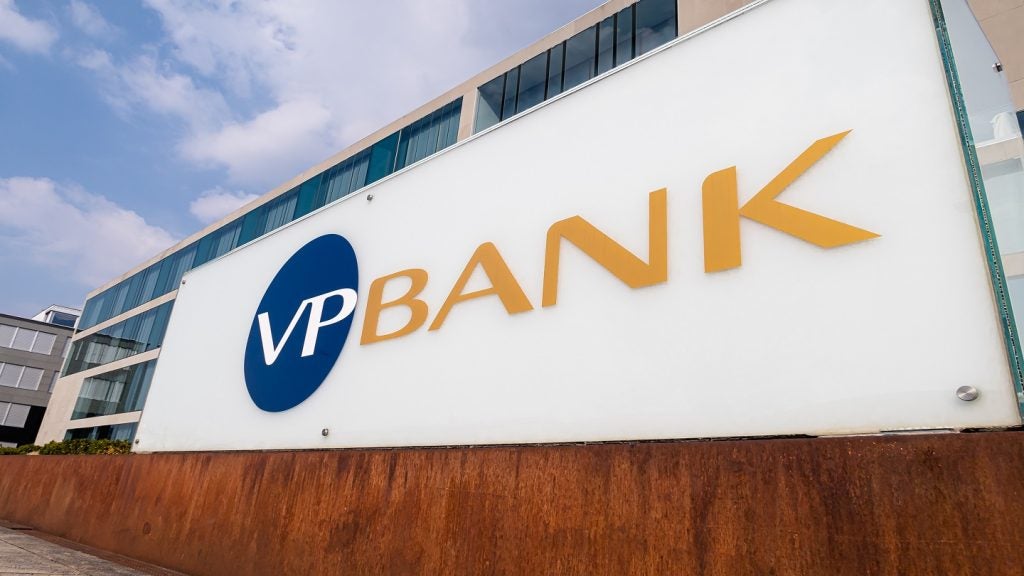
Global spending on private banking IT systems is
expected to top $32bn by 2015 as wealth managers drive for greater
efficiencies while grappling with rising regulation and demanding
clients. Ilya Timofeyev discusses budgets, back office and single
customer view with Credit Suisse, UniCredit, Citi Private Bank and
Barclays Wealth.
 Banks are
Banks are
caught between a rock and a hard place.
They know that they need to upgrade their IT systems, especially
around back office data management and asset reporting, while
tech-savvy clients pile pressure on them to have 21st century front
end services.
How are private banks prioritising the vast array of IT projects
and what are their greatest challenges?
The industry’s technology challenge
is well-documented.
In June 2011,
PricewaterhouseCoopers (PwC) released its biennial Global Private
Banking and Wealth Management survey, which highlighted that banks
have concentrated on developing their front office systems at the
expense of back office platforms – some of which date back to the
1980s.
Underinvestment
widespread
This desire to meet client-driven
demand on new client relationship management (CRM) models has led
banks to suffer from what PwC has termed “an operational lag”.
Speaking in June 2011 to
PBI, PwC’s Global Private Banking and Wealth Management
leader for EMEA Jeremy Jensen said that the sector has been
underinvested for a long time.
“It is really about actions that
you took five years ago determining where you are today.
The actions banks take today will
drive where they are in five years time,” he explained.
Banks are responding to these
shortfalls in IT as they realise they need to bring their systems
up to date in order to secure their future growth.
PwC found that out of 275
participating financial services institutions, 60% increased
technology budgets in the past two years, while 42% of respondents
increased their operational budgets.
Spending up large on IT upgrades is
only set to increase across the industry.
Research firm Ovum forecasts that
global spending on IT will top $32bn by 2015, a growth rate of
almost 7% over a five-year period.
 Money
Money
matters
Barclays Wealth is one bank taking
IT infrastructure very seriously. It is in the middle of a
three-year £350m ($553m) investment project, Project Gamma, on IT,
operational and business infrastructure globally.
The largest share of this £350m is
to be invested in technology.
This is on top of the £350m it is
already spending on upgrading its systems, meaning spending on IT
and other areas is effectively doubling to £700m to 2013.
Some of Gamma’s priorities include
implementing a bank-wide single customer view, a client onboarding
solution and front office offerings over the web to clients, and
internally to relationship managers.
Back office functionality is a
critical cog.
“It is critical that we have good
back office systems” says Brad Novak, head of IT at Barclays
Wealth.
“No amount of investment in front
office systems can take bad data from the back office and make it
look presentable to the client.”
“Front office systems are generally
smaller and more modular. Replacing or combining back office
systems is a significant, multi-year investment,” says Novak.

Leveraging the wider
bank
Novak’s counterpart, US-based Indy
Reddy, head of private banking technology at Citigroup, says that
right now his bank’s primary focus is on the front office because
it has completed upgrading its back office.
“For the past 3-4 years we’ve been
converging onto Citigroup platforms [Consumer, Capital Markets and
Institutional]. We have leveraged existing Citigroup systems where
possible to reduce existing Private Bank systems and minimise
building new ones,” he explains.
According to Reddy, Citi Private
Bank made savings as a part of its efficiencies and is plying them
back into IT development, meaning the private bank’s IT spend is
increasing slightly this year.
“We got rid off our proprietary
systems and leveraged other Citigroup systems, which gave us scale
and cost savings and efficiencies,” he says.
According to Reddy, gained savings
go towards building reporting capabilities and further developing
Citi’s web and mobile capabilities.
Breaking up the
budget
Citi Private Bank divides its IT
budget into three categories:
- around a bank spend’ to keep
bank systems and software up and running; - technology mandatory spend’
to upgrade Citi’s hardware and databases; and - business discretionary’ to
build functionality and support new products.
“We allocate 10-15% of the private
bank’s annual budget to business mandatory spend. The percentage
depends on what’s going on that year. In the case of Basel II, when
some compliance systems were replaced or integrated with the back
office, we spent a little bit more,” Reddy explains.
Reddy said that Citi had to hoist
its budget when it replaced an AML (anti-money laundering) platform
with an outside vendor software.
“For example, if the vendor
platform is implemented in Europe and Asia, then I have to change
my systems to integrate with the vendor. So, as a result of that,
the budget increases – full stop,” says Citi’s head of IT.
All the other banks spoken to
echoed the view that rising regulation inevitably drives a lot of
mandatory investment.
The UK’s retail distribution
review, Europe’s MiFiD and regulatory changes in the US around cost
basis reporting, anti-money laundering and FATCA were all cited as
regulations that have a direct impact on IT costs.
Prioritising the back
office
Back office systems are a major
area of focus for Credit Suisse as some of its legacy systems are
up to 25 years old.
Swiss-based Daniel Ott, head of
private banking IT at Credit Suisse, admits its current back office
system is “very matured and highly integrated”.
He says the back office is one of
his bank’s areas of investment as Credit Suisse looks to increase
its efficiency for its operation units as well as to keep up with
the lifecycle of the bank’s systems.
“Some of our back office systems
are based on legacy systems, which have to be maintained. We are
currently focusing on bringing them up to speed with today’s
needs,” he explains.
“This goes back to the 1980s, when
we started to build on that back office system and carried on
building it and adding new functionalities.
“The concepts, some of them, are 20
to 25 years old. What we do now – we look at how we can bring these
concepts to today’s level. We do it within this renewing or
lifecycle management cluster,” explains Ott.
Streamlining
systems
In the meantime, UniCredit, which
plans next year to invest into the back office to increase its
efficiency, faces a different problem.
“We have two different back office
systems for two different sets of products,” says Gianluca
Giordano, head of private banking organisation at UniCredit, whose
entity currently shares the back office with the retail bank.
One system is developed in-house
and the other is an investment market system that has been
customised.
UniCredit’s private banking
business, whose back office systems are provided by a separate
company within UniCredit Group, also plans to reduce its existing
system to one, although the final decision will not be made until
mid-2012.
Unicredit: spending up
10-15% in 2011
Giordano estimates UniCredit’s
private bank will spend 10-15% more on IT in 2011 than last year,
although in general its spending has been stable.
“We are currently insourcing our
segregated accounts managed by our captive asset management firm
[Pioneer Investment Management], that is the main reason behind the
budget increase,” he says.
Ultimately, back office systems,
like any system, come to the end of their lives, says Barclays’
Novak, and it does not matter whether it is a vendor system or
built in-house.
“Whatever technology and
architecture you choose won’t remain fit for purpose forever. At
some point you have to decide to stop modifying, extending and
refactoring and move to a new platform,” says Novak.
“At some point you decide to move
on to one of your other back office platforms or bring in a new
vendor and a new solution.”
Barclays Wealth primarily uses
vendor software for books and records platforms.
The race for a single
customer view
One area of IT in which development
banks are eager to progress is the single customer view (SCV).
Many banks have a view of their
clients’ asset allocation and holdings within their private banking
division.
Most global banks either have
systems to show their clients exposure across the whole bank, or
are working on this functionality, but developing systems that take
into account client assets at rival banks is increasingly becoming
a must-have item.
Ott says it is important to have
features such as SCV in order to have an overview of client’s
assets, liabilities and client profitability.
“We have implemented it into our
front office tool suite, which also takes care of the advisory
process, if the client wants to make a use of the SCV feature,”
explains Ott.
Citi’s Reddy, whose bank has SCV at
a relationship level, explains further: “If you have a client who
has accounts in booking centres in Hong Kong, Switzerland and the
US, and chooses to see all three accounts together – they can see
it.”
Viewing client assets
outside your bank
However, if the client has assets
with another bank and wishes to combine them with their Citi
holdings to obtain a consolidated report, Citi does not have an
external aggregation reporting capability.
“It is something we are looking at
exploring and having that capability,” says Reddy.
Credit Suisse’s Ott echoes Citi
saying his bank has got SCV only internally. However, if the client
wants to inform Credit Suisse about their other assets, with the
bank’s competitors or somewhere else, they are always welcome to do
so.
“But we do not have an agreement
with other banks in terms of sharing this information,” concludes
Ott.
Giordano also says their SCV
platform is implemented across UniCredit’s different divisions.
Having incorporated the SCV feature
into its advisory platform, UniCredit provides a complete view of
all client’s financial assets within the bank as well as with other
banks.
“You can have a full view: by asset
class, by maturity, by products. It includes all the financial
products, which the client owns: insurance products, corporate
bonds, government bonds,” explains Giordano.
According to Giordano, SCV has
existed in Germany for the past two years, while in Italy its
implementation is due to be completed in a month’s time.
“In Austria, we are on the way to
implement it,” states Giordano.
Choice
paralysis?
Barclays’ Novak says getting a
fully global single-customer view is one of the main objectives of
Project Gamma.
It is currently offered across
Barclays Wealth, but the goal is getting it across the bank.
“Showing it for just your wealth
investment account isn’t particularly hard. [But] pulling all those
other systems together, getting the timing, reporting currencies
right, and then being able to do it with multiple and different
views – it’s a major data challenge to show those different views
that consolidate client holdings,” says Novak.
With so much going on in the IT
space, prioritising projects is one of the key challenges.
Fancy front-end client reporting
systems cannot be rolled out if the data management systems are
outdated and the information is not relevant.
“Prioritising competing demand is a
massive challenge,” says Novak. “Our employees and our clients
continue to grow more and more tech savvy.
“Simply choosing the right
investments from the sheer number of ideas that come our way is a
never-ending process, but one of the most critical things we
do.”
Another challenge for Barclays
Wealth lies within the data management and real time reporting.
“Creating a single view for our
clients is a challenging data problem. We need to aggregate all of
their holdings, accounts and relationships across the firm in a
clear and consistent way,” he says.
Getting efficiencies out of
scale
UniCredit’s Giordano admits that
his organisation has not exploited the potential of being a global
bank.
“We have been working on trying to
homogenise the IT platform across countries and having a single
pan-European platform on the CRM side, advisory side and the back
office for segregated accounts. It is still a work in progress,” he
says.
UniCredit’s efforts are worth the
effort. Giordano forecasts the bank’s IT running costs will drop
20-30% as a result of increasing efficiencies, representing a €5m
to €10m saving per year.
While Credit Suisse faces
complexity of its back office upgrade IT projects, Citi Private
Bank is being challenged by the integration and automation of its
existing platforms within Citigroup.
“We are strengthening and upgrading
front office capabilities and also integrating with the back office
and focusing on having greater automation,” says Citi’s Reddy.
Global private banks understand the
necessity of investing in their IT infrastructure and increasing
efficiency.
However, balancing regulatory
demands, client wishes and the costs of developing such
applications is a fine balancing act.
Challenges abound, but those banks that can channel their
technology offering efficiently will gain market share from their
rivals with slower tech take-up.
See also: Asian banks lack back-office
automation







